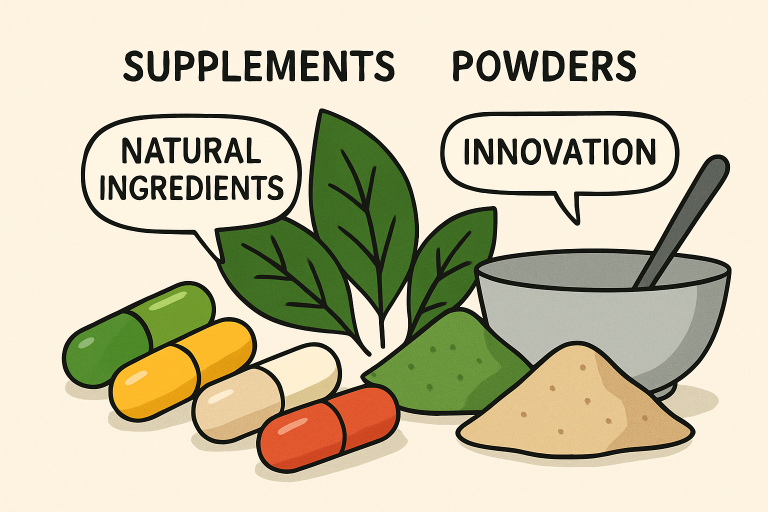Table of Contents
- Introduction to Flat Laser Cutting
- Advancements in Fiber Laser Technology
- Automation and Integration in Laser Cutting
- Multi-Axis and 3D Laser Cutting
- Combining Laser Cutting with Other Technologies
- Future Trends in Laser Cutting
- Conclusion
Flat laser cutting stands at the forefront of manufacturing innovation, delivering superior accuracy, flexibility, and speed. As industries continually seek faster turnarounds and exacting tolerances, these techniques are transforming everything from automotive parts to architectural features. The increased demand for sophisticated metalwork has made flat laser cutting the preferred solution for manufacturers worldwide. For those seeking precision and reliability in the heart of Canada, experienced providers like laser cutting Manitoba are driving local industries forward with cutting-edge solutions.
This dynamic process is favored for minimizing material waste, reducing lead times, and producing flawless cuts in a range of metals. By leveraging advancements in laser technology, manufacturers can now tackle more complex designs while keeping costs contained. These cutting innovations enable higher productivity in sectors such as aerospace, electronics, and custom fabrication.
With digital integration, modern laser systems enable real-time adjustments to accommodate variations in materials or project requirements. Coupled with evolving fiber lasers, these enhancements result in exceptional repeatability and a low error rate, enabling manufacturers to maintain stringent quality controls across large production runs. Whether companies are producing intricate circuit boards or robust engine parts, the precision afforded by flat laser cutting brings designs to life with remarkable detail.
Additionally, improvements in automation and the blending of multiple manufacturing technologies continue to extend the capabilities of laser cutting. These progressions enable industries not only to meet demand but also to raise the bar for what is achievable in metal fabrication. As we move further into a digitally driven manufacturing landscape, flat laser cutting remains central to the evolution of how we build and innovate.
Introduction to Flat Laser Cutting
Flat laser cutting uses a precisely focused laser beam to cut through metal sheets with unmatched accuracy. The process works by directing high-powered lasers along CNC-programmed paths to create intricate shapes and patterns. With minimal physical contact, there is much less risk of material deformation, ensuring clean edges and consistent finishes.
Industries ranging from automotive to electronics rely on flat laser cutting because it handles detailed geometries that traditional stamping or sawing cannot achieve cost-effectively. Unlike manual cutting, lasers can execute patterns with high repeatability, making them indispensable for both high-volume manufacturing and bespoke fabrication.
Advancements in Fiber Laser Technology
Recent leaps in fiber laser technology have been transformative for metal fabrication. Modern fiber lasers deliver stronger, more focused energy with significantly less maintenance than earlier CO₂ systems. For example, tunable fiber lasers like nLIGHT’s Corona enable operators to switch spot sizes instantly, optimizing cut quality for each material or thickness in real-time. This flexibility allows manufacturers to handle a wide range of materials, from ultra-thin steel to reflective materials like aluminum and copper, without requiring machine adjustments.
Fiber lasers are also highly energy-efficient, requiring less cooling, which reduces operational costs and environmental impact. Their enhanced beam quality produces tighter, cleaner cuts, even at high speeds. These lasers enable manufacturers to achieve complex projects and outperform older technologies when manufacturing challenging components.
Automation and Integration in Laser Cutting
Automation is a monumental advancement in laser cutting technology. With automated material loading, sorting, part removal, and stacking, manufacturers can operate their systems 24/7 with minimal human oversight. Integration with ERP and CAD/CAM systems enables real-time scheduling, remote monitoring, and instant modifications to cutting parameters. This level of automation enhances not just productivity and scalability but also consistency in quality across every run.
Adopting automation transforms laser cutters into vital components of fully digitized, smart factories, enabling rapid shifts between production orders and the ability to manage custom or small-batch jobs with minimal downtime. As a result, industries can keep pace with custom market trends and deliver precision parts with relentless efficiency. According to Machine Design, incorporating IIoT and automation reduces manufacturing errors and speeds up time to market.
Multi-Axis and 3D Laser Cutting
Expanding on traditional flat cutting, multi-axis laser systems have revolutionized the ability to process pipes, tubes, and irregular 3D shapes. These machines articulate the laser head along multiple axes (up to five or more), enabling precise cuts along curved or angled surfaces. This innovation is crucial for creating custom automotive components, complex architectural structures, and even artistic installations that require both functionality and aesthetic appeal.
As multi-axis laser machines become more affordable and accessible, manufacturing design is no longer limited by two-dimensional constraints. The flexibility encourages engineers and designers to explore unconventional geometries without incurring excessive labor or tooling costs. This trend is expected to gain further momentum and foster market growth, as highlighted in Engineering.com.
Combining Laser Cutting with Other Technologies
Forward-thinking manufacturers are blending laser cutting with ancillary processes to streamline production and enhance product quality. Techniques such as pre-cut folding lines in sheet metal enable laser-cut shapes to transition directly to bending machines for automated folding, eliminating the need for welding and reducing assembly time. In other workflows, starting with laser-cut blanks and then proceeding to precision welding or laser engraving, delivers the tight tolerances required for complex assemblies and decorative finishes.
The marriage of processes minimizes handling, ensures error-proof production, and provides a competitive advantage by shortening the journey from raw sheet to finished product. This synergy is particularly advantageous in industries where labor costs and time-to-market are key factors in maintaining profitability and meeting customer demands.
Future Trends in Laser Cutting
The near future holds remarkable potential for laser cutting, with artificial intelligence (AI) and machine learning set to drive even greater efficiencies. AI-powered systems are increasingly used to self-optimize cutting patterns, predict maintenance needs, reduce energy use, and maximize material usage—ensuring less waste and increased machine uptime. At the same time, ultrafast lasers capable of femtosecond-pulse cutting are rewriting the rules for handling delicate and thin materials, producing edges that are virtually free of heat-affected zones.
These advancements point to a future where manufacturers can embrace mass customization while retaining lean, highly automated operations. Integrated data analytics and cloud-connected machinery will enable smarter, more responsive supply chains and further enhance the capabilities of laser fabrication.
Conclusion
Flat laser cutting is a linchpin of modern manufacturing, evolving rapidly through technological breakthroughs and seamless integration with other processes. Its unmatched precision, adaptability, and efficiency make it indispensable for competitive businesses in a range of sectors. Staying ahead in today’s fast-paced manufacturing environment means leveraging these innovations to improve output quality, reduce costs, and unlock new creative potential across industrial applications.


 Blog6 months ago
Blog6 months ago
 Entertainment6 months ago
Entertainment6 months ago
 News6 months ago
News6 months ago
 Blog6 months ago
Blog6 months ago
 Blog6 months ago
Blog6 months ago
 Technology6 months ago
Technology6 months ago
 Blog6 months ago
Blog6 months ago
 Technology6 months ago
Technology6 months ago


